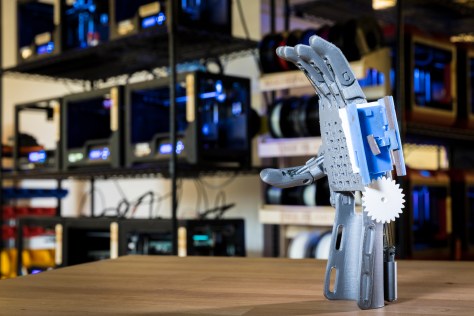Venkatesh Potluri, Tadashi E. Grindeland, Jon E. Froehlich, Jennifer Mankoff: Examining Visual Semantic Understanding in Blind and Low-Vision Technology Users. CHI 2021: 35:1-35:14
Visual semantics provide spatial information like size, shape, and position, which are necessary to understand and efficiently use interfaces and documents. Yet little is known about whether blind and low-vision (BLV) technology users want to interact with visual affordances, and, if so, for which task scenarios. In this work, through semi-structured and task-based interviews, we explore preferences, interest levels, and use of visual semantics among BLV technology users across two device platforms (smartphones and laptops), and information seeking and interactions common in apps and web browsing. Findings show that participants could benefit from access to visual semantics for collaboration, navigation, and design. To learn this information, our participants used trial and error, sighted assistance, and features in existing screen reading technology like touch exploration. Finally, we found that missing information and inconsistent screen reader representations of user interfaces hinder learning. We discuss potential applications and future work to equip BLV users with necessary information to engage with visual semantics.






















 The absence of tactile cues such as keys and buttons makes touchscreens difficult to navigate for people with visual impairments. Increasing tactile feedback and tangible interaction on touchscreens can improve their accessibility. However, prior solutions have either required hardware customization or provided limited functionality with static overlays. In addition, the investigation of tactile solutions for large touchscreens may not address the challenges on mobile devices. We therefore present Interactiles, a low-cost, portable, and unpowered system that enhances tactile interaction on Android touchscreen phones. Interactiles consists of 3D-printed hardware interfaces and software that maps interaction with that hardware to manipulation of a mobile app. The system is compatible with the built-in screen reader without requiring modification of existing mobile apps. We describe the design and implementation of Interactiles, and we evaluate its improvement in task performance and the user experience it enables with people who are blind or have low vision.
The absence of tactile cues such as keys and buttons makes touchscreens difficult to navigate for people with visual impairments. Increasing tactile feedback and tangible interaction on touchscreens can improve their accessibility. However, prior solutions have either required hardware customization or provided limited functionality with static overlays. In addition, the investigation of tactile solutions for large touchscreens may not address the challenges on mobile devices. We therefore present Interactiles, a low-cost, portable, and unpowered system that enhances tactile interaction on Android touchscreen phones. Interactiles consists of 3D-printed hardware interfaces and software that maps interaction with that hardware to manipulation of a mobile app. The system is compatible with the built-in screen reader without requiring modification of existing mobile apps. We describe the design and implementation of Interactiles, and we evaluate its improvement in task performance and the user experience it enables with people who are blind or have low vision.










